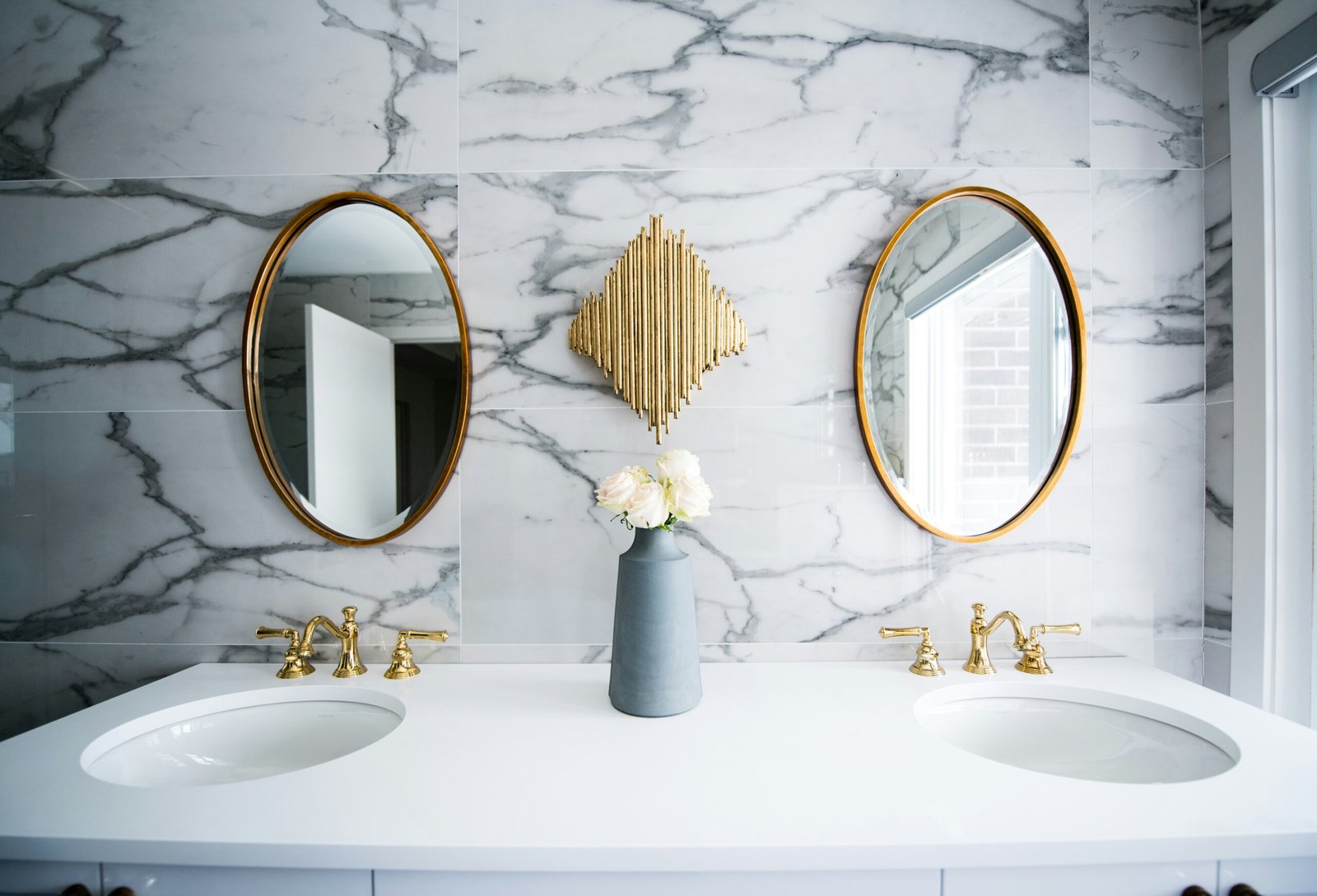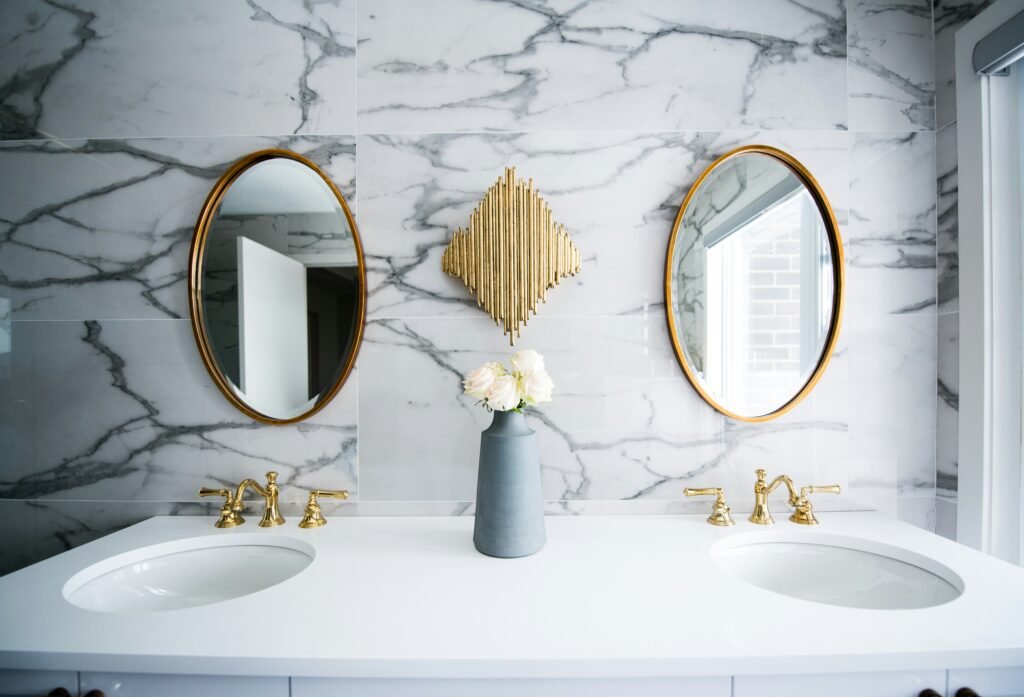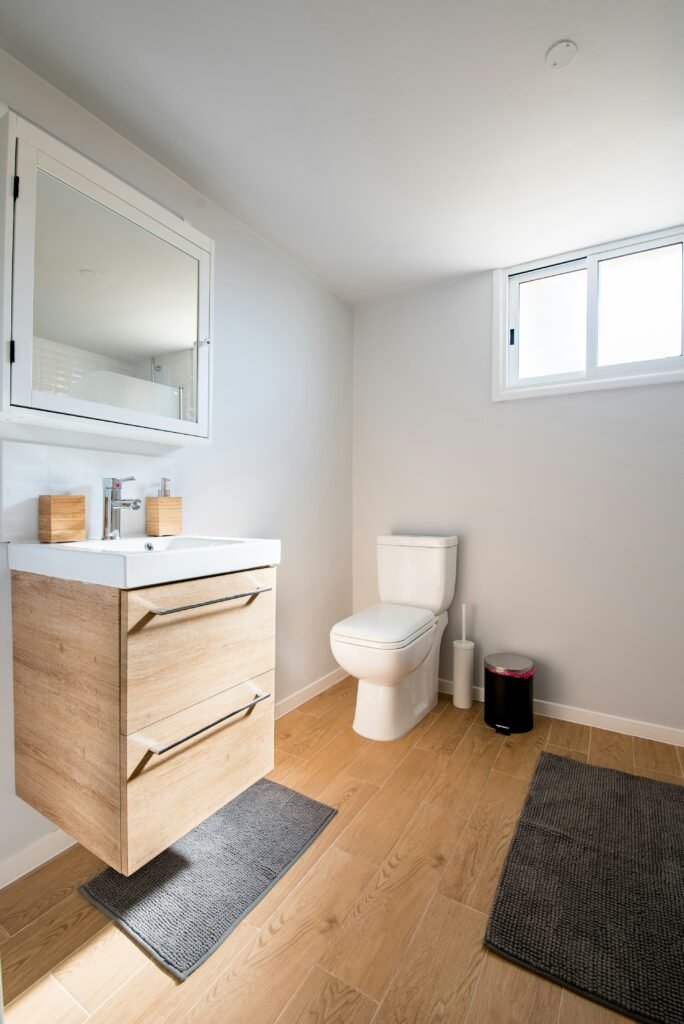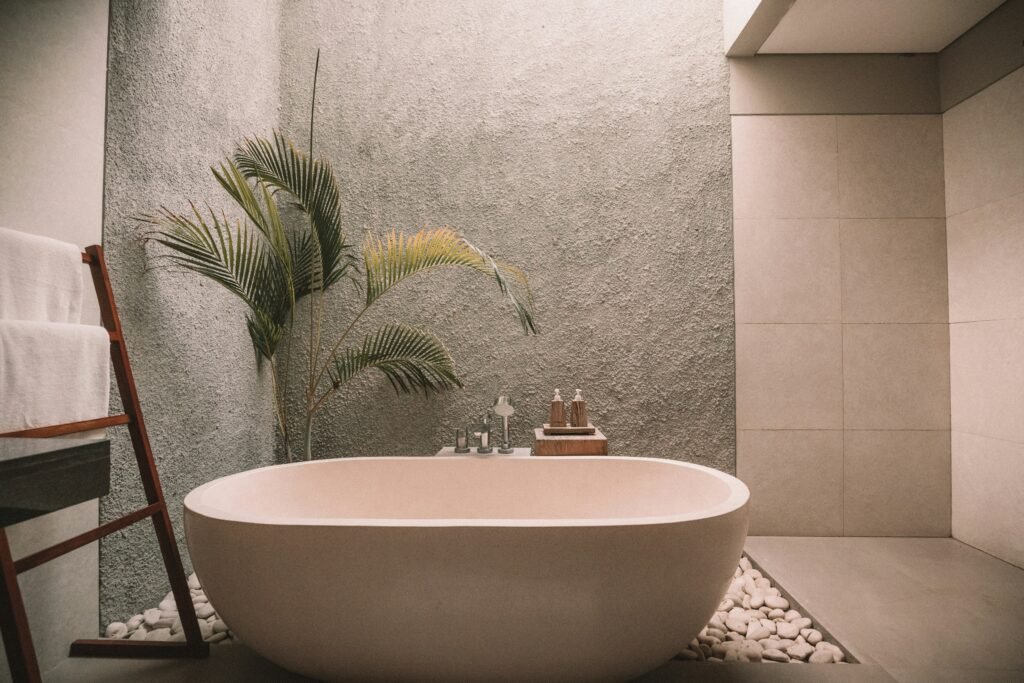
Are you considering renovating your bathroom but feeling overwhelmed by the potential costs? Look no further! In this article, we will provide you with practical budgeting tips and advice to help you manage the expenses involved in your bathroom renovation project. From setting a realistic budget to making smart decisions when it comes to materials and hiring professionals, we’ve got you covered. Say goodbye to any financial stress and say hello to your dream bathroom within your budget. Let’s get started!

This image is property of images.unsplash.com.
Determining your budget
Assessing your financial situation
Before embarking on a bathroom renovation project, it is crucial to assess your current financial situation. Take the time to review your income, expenses, and savings to determine how much you can comfortably allocate towards the renovation. Consider your monthly budget and any existing financial commitments, such as loan repayments or utility bills. Understanding your financial capacity will help you set realistic expectations for the project.
Researching average costs
To get a better idea of the average costs associated with bathroom renovations, it is advisable to conduct thorough research. Look for reliable sources online or consult home improvement magazines to find estimates for labor, materials, and fixtures. Understanding the typical range of expenses will allow you to plan your budget more accurately and avoid any surprises along the way.
Setting a realistic budget
Once you have assessed your financial situation and researched average costs, it is time to set a realistic budget for your bathroom renovation. Consider the scope of the project, the size of your space, and any specific design elements you have in mind. Allocate funds for labor, materials, fixtures, and unexpected expenses to create a comprehensive budget that covers all aspects of the renovation. Remember to factor in a contingency fund to account for any unforeseen costs that may arise.
Considering additional expenses
When creating your budget, it is essential to consider additional expenses that may arise during the renovation process. For example, if you are living in the house while the renovations take place, you may need to budget for alternative accommodation or temporary bathroom facilities. Additionally, if your bathroom is part of a larger renovation project, such as a bathroom and kitchen remodel, be sure to allocate funds accordingly. By considering these additional expenses upfront, you can plan your budget more effectively and avoid any financial strain during the renovation.
Prioritizing your needs
Identifying essential renovations
When planning your bathroom renovation, it is important to identify the essential renovations required. Consider the functional aspects of your bathroom, such as plumbing, ventilation, and storage, and ensure they are in good condition. Address any safety concerns, such as outdated electrical systems or slippery floors. By prioritizing these essential renovations, you can allocate your budget and resources accordingly, ensuring your bathroom meets your basic needs.
Deciding on optional upgrades
While addressing the essential renovations, you may also want to consider optional upgrades to enhance the overall look and feel of your bathroom. These upgrades could include features like a spa-style bathtub, underfloor heating, or high-end fixtures. However, it is crucial to weigh the cost of these upgrades against your overall budget. Consider whether they align with your financial goals and if they are worth the investment in terms of your long-term satisfaction.
Ranking priorities
Once you have identified the essential renovations and decided on any optional upgrades, it is essential to rank your priorities. Determine which aspects of the renovation are most important to you and allocate a larger portion of your budget and resources to these areas. This will help you make informed decisions and ensure that the key elements of your bathroom renovation receive the attention they deserve.

This image is property of images.unsplash.com.
Hiring professionals vs. DIY
Evaluating your skills and experience
Deciding whether to hire professionals or take on the renovation as a do-it-yourself (DIY) project requires an honest evaluation of your skills and experience. Consider your previous experience with home improvement projects, especially any involving plumbing, electrical work, or construction. If you have limited experience or lack the necessary skills, it is generally advisable to hire professionals to ensure the renovation is done safely and up to code.
Researching contractor costs
If you decide to hire professionals, researching contractor costs is an essential step in determining your budget. Obtain quotes from different contractors, ensuring they provide a breakdown of the costs for materials and labor. Compare these quotes and consider factors such as the contractor’s reputation, experience, and past work. Remember that while hiring professionals may have a higher upfront cost, they can save you time, stress, and potentially costly mistakes in the long run.
Weighing pros and cons of DIY
For those considering a DIY approach, it is important to weigh the pros and cons. DIY renovations can be cost-effective and provide a sense of accomplishment, but they also require significant time, effort, and skill. Consider whether you have the necessary tools, knowledge, and ability to complete the renovation to a high standard. Additionally, think about any potential risks, such as damaging existing structures or voiding warranties on fixtures or appliances.
Considering the complexity of the renovation
The complexity of the renovation should also be taken into account when deciding between hiring professionals or DIY. Some renovations, such as replacing a vanity or updating fixtures, may be relatively straightforward and suitable for a DIY approach. However, more complex renovations, such as reconfiguring plumbing or relocating electrical outlets, may require professional expertise to ensure they are done safely and correctly. Evaluate the complexity of your project and consider seeking professional assistance if needed.
Finding cost-saving options
Comparing prices from different suppliers
To make the most of your budget, it is important to compare prices from different suppliers. Research various stores and online suppliers to find the best deals on materials, fixtures, and appliances. Remember that the cheapest option is not always the best option, as quality and durability should also be considered. By comparing prices, you can find cost-saving options without compromising on the quality of your bathroom renovation.
Exploring discounted materials
Another cost-saving option is to explore discounted materials. Many suppliers offer discounted items, such as floor tiles or bathroom fixtures, which may be discontinued lines, overstocked items, or slightly imperfect. These materials can often be purchased at a fraction of the original price, providing significant savings for your renovation. Remember to inspect discounted materials thoroughly for any visible defects and ensure they meet your aesthetic and functional requirements.
Considering pre-owned fixtures and furniture
If you are open to using pre-owned items, consider purchasing second-hand fixtures and furniture for your bathroom renovation. Websites, social media marketplaces, and salvage yards can be great resources for finding quality pre-owned items at a lower cost. Ensure that any pre-owned fixtures or furniture are in good condition and compatible with your renovation plans before making a purchase. This eco-conscious option not only helps reduce costs but also promotes sustainability by giving these items a second life.
Repurposing existing items
When considering cost-saving options, do not overlook the possibility of repurposing existing items in your bathroom. For example, if your bathtub is in good condition but looks dated, consider refinishing it instead of buying a new one. Similarly, if your vanity has solid construction, you may be able to update it with a fresh coat of paint and new hardware. By repurposing existing items, you can save money while still achieving a refreshed and updated look for your bathroom.

This image is property of images.unsplash.com.
Estimating renovation costs
Breaking down expenses by category
To estimate your renovation costs accurately, it is helpful to break down the expenses by category. Start by creating a list of all the items you will need, including materials, fixtures, labor, permits, and any additional costs. Assign estimated costs to each category based on your research and quotes obtained from suppliers and contractors. Breaking down the expenses will help you see the bigger picture and ensure that each aspect of your bathroom renovation is accounted for in your budget.
Including labor costs
When estimating renovation costs, it is crucial to include labor costs. Labor costs can significantly impact your budget, particularly if you are hiring professionals for the job. Obtain quotes from contractors that clearly outline the labor costs, ensuring that any potential overtime or additional fees are taken into account. If you are undertaking a DIY project, consider the value of your time and any assistance you may need from friends or family members.
Accounting for unforeseen contingencies
No matter how well you plan, it is important to account for unforeseen contingencies when estimating your renovation costs. Unexpected issues, such as hidden water damage or structural problems, can arise during the renovation process and require additional spending. As a rule of thumb, it is advisable to allocate around 10-20% of your total budget as a contingency fund. This will give you peace of mind knowing that you have a financial buffer to address any unexpected contingencies that may arise during the renovation.
Creating a detailed renovation plan
Measuring the space accurately
Before diving into the renovation, it is essential to measure the space accurately. Take precise measurements of the existing bathroom layout, including the dimensions of walls, doorways, and windows. This information will help you plan the new layout effectively and ensure that your fixtures and materials fit correctly. Accuracy in measurements will prevent costly mistakes and save you time and frustration down the line.
Designing the layout
Designing the layout of your new bathroom is one of the most exciting and important aspects of the renovation process. Consider the functionality and flow of the space, as well as your personal preferences and needs. Determine the ideal placement of your fixtures, such as the bathtub, shower, vanity, toilet, and storage. Experiment with different layouts and consult design resources or professionals for guidance if needed. A well-designed layout will optimize the functionality and visual appeal of your bathroom.
Determining required materials
Once you have the layout finalized, it is time to determine the required materials for your renovation. Make a comprehensive list of all the materials needed, including flooring, tiles, paint, cabinetry, hardware, lighting, and plumbing fixtures. Ensure that the materials you choose align with your budget, design vision, and desired level of quality. Research product options and read reviews to make informed decisions about the best materials for your bathroom renovation.
Researching product reviews
When selecting materials and fixtures for your bathroom renovation, it is important to research product reviews. Reading reviews from other consumers can provide insight into the performance, durability, and quality of different products. Look for products with positive reviews and high ratings to ensure that you are investing in materials that will stand the test of time. Additionally, consider the warranty and after-sales support offered by manufacturers, as this can impact your long-term satisfaction with the renovation.
Obtaining multiple quotes
Requesting quotes from different contractors
If you have decided to hire professionals for your bathroom renovation, it is advisable to request quotes from different contractors. Reach out to several reputable contractors in your area and provide them with detailed information about the project. Ask for itemized quotes that specify the cost of labor, materials, and any additional services or fees. This will allow you to compare the quotes and make an informed decision based on both the cost and the value that each contractor offers.
Comparing the inclusions and exclusions
When reviewing the quotes from different contractors, it is crucial to compare the inclusions and exclusions. Ensure that each quote covers all the necessary aspects of your renovation, such as demolition, installation, and cleanup. Pay attention to any exclusions or additional charges that may not be explicitly mentioned, as these can significantly impact the overall cost. Clarify any areas of confusion or ambiguity with the contractors to ensure that you have a clear understanding of what is included in each quote.
Verifying past work and customer reviews
When considering contractors for your bathroom renovation, it is essential to verify their past work and customer reviews. Ask for references or examples of projects similar to yours that they have completed. This will give you an idea of the contractor’s expertise and the quality of their work. Additionally, read customer reviews and testimonials to gain insight into the experiences of previous clients. A reputable contractor will have positive reviews and be transparent about their previous work.
Dealing with unexpected expenses
Building a contingency fund
As mentioned earlier, building a contingency fund is crucial when planning for unexpected expenses during your bathroom renovation. Set aside a portion of your budget, typically around 10-20%, to cover any unforeseen costs that may arise. This will provide a financial buffer and alleviate stress if unexpected issues or additional work is required. Having a contingency fund in place will ensure that you can handle unexpected expenses without compromising the quality or completion of your renovation.
Considering potential hidden costs
Hidden costs can catch you off guard during a bathroom renovation, impacting your budget significantly. Examples of potential hidden costs include structural repairs, electrical upgrades, or plumbing modifications that become apparent only after the demolition phase. When planning your renovation, consider the age and condition of your home, as well as any potential underlying issues that may require attention. This proactive approach will help you prepare financially for any hidden costs that may arise.
Being prepared for unforeseen issues
No matter how well you plan, unforeseen issues can arise during a bathroom renovation. It is important to be mentally and emotionally prepared for these challenges. Understand that unexpected setbacks or delays are a normal part of the renovation process. Stay flexible and adapt to any changes that may occur along the way. Having a positive mindset and being prepared to handle unforeseen issues will help you navigate the renovation with less stress and frustration.
Implementing cost-cutting strategies
Do a portion of the work yourself
One effective cost-cutting strategy is to do a portion of the renovation work yourself. Assess your skills and capabilities and determine if there are any aspects of the renovation that you can confidently handle. For example, painting the walls, installing simple fixtures, or assembling cabinets can be tasks that you can tackle on your own. By taking on some of the work yourself, you can save on labor costs and allocate your budget towards other essential aspects of the renovation.
Opt for affordable but visually appealing materials
Another way to cut costs without compromising on aesthetics is to opt for affordable but visually appealing materials. Look for budget-friendly options that mimic more expensive materials, such as porcelain tiles that resemble marble or vinyl flooring that imitates hardwood. Many manufacturers offer affordable alternatives that can achieve the desired look without breaking the bank. Just be sure to choose materials that are durable and of good quality to ensure they withstand daily use.
Avoid unnecessary additions or luxuries
When budgeting for your bathroom renovation, it is important to avoid unnecessary additions or luxuries that may strain your budget. While it can be tempting to splurge on fancy fixtures or high-end accessories, consider their practicality and long-term value. Prioritize functional and essential elements that will contribute to the comfort and usability of your bathroom. Making thoughtful and practical choices will help you stay within your budget while still achieving a beautiful and functional space.
Finalizing the renovation plan
Making adjustments within budget constraints
Once you have created a detailed renovation plan, it is important to make adjustments within your budget constraints. Review each aspect of the plan and consider if there are any areas where you can make cost-saving adjustments. For example, you may choose a more affordable tile option or opt for a simpler vanity design. By making these adjustments, you can ensure that your renovation plan aligns with your budget without compromising the overall vision and functionality of your new bathroom.
Obtaining necessary permits
Before initiating the renovation, it is essential to determine if any permits are required for the work. Check with your local building department to understand the specific requirements and regulations for bathroom renovations in your area. Typically, permits are necessary for any major plumbing or electrical work. Failing to obtain the necessary permits can result in fines or complications when selling your property in the future. By securing the appropriate permits, you can ensure that the renovation is done safely and legally.
Developing a realistic timeline
Creating a realistic timeline is crucial for the successful execution of your bathroom renovation. Consider the scope of work, the availability of contractors or suppliers, and any potential delays that may arise. Be aware that unforeseen issues or changes in design may impact the timeline. Setting realistic expectations and allowing for some flexibility will help you navigate the renovation process with less stress. Communicate your desired timeline with contractors and suppliers to ensure everyone is aligned and working towards the same goal.
Creating a backup plan
Lastly, it is wise to create a backup plan in case any unexpected challenges or delays occur during the renovation. This could involve having alternative suppliers or contractors in mind or identifying temporary bathroom facilities if needed. By having a backup plan in place, you can address any potential setbacks efficiently and keep the renovation on track. Flexibility and preparedness will ensure that your bathroom renovation journey is as smooth as possible.
In conclusion, planning and budgeting for a bathroom renovation requires careful consideration of your financial situation, priorities, and cost-saving strategies. Assess your financial capacity, research average costs, and set a realistic budget. Prioritize essential renovations and decide on optional upgrades based on your needs and preferences. Evaluate your skills and research contractor costs when deciding between hiring professionals or undertaking a DIY project. Explore cost-saving options such as comparing prices, exploring discounted materials, considering pre-owned items, and repurposing existing fixtures. Estimate renovation costs by breaking down expenses, including labor costs, and accounting for unforeseen contingencies. Create a detailed renovation plan by accurately measuring the space, designing the layout, determining required materials, and researching product reviews. Obtain multiple quotes from different contractors, compare inclusions and exclusions, and verify their past work and customer reviews. Prepare for unexpected expenses by building a contingency fund, considering potential hidden costs, and being mentally prepared for unforeseen issues. Implement cost-cutting strategies such as doing some of the work yourself, opting for visually appealing but affordable materials, and avoiding unnecessary additions or luxuries. Finally, finalize your renovation plan by making adjustments within budget constraints, obtaining necessary permits, developing a realistic timeline, and creating a backup plan. With careful planning and consideration, your bathroom renovation can be a successful and rewarding endeavor.

